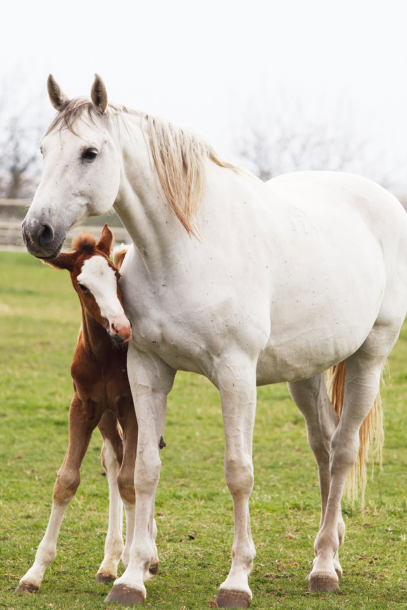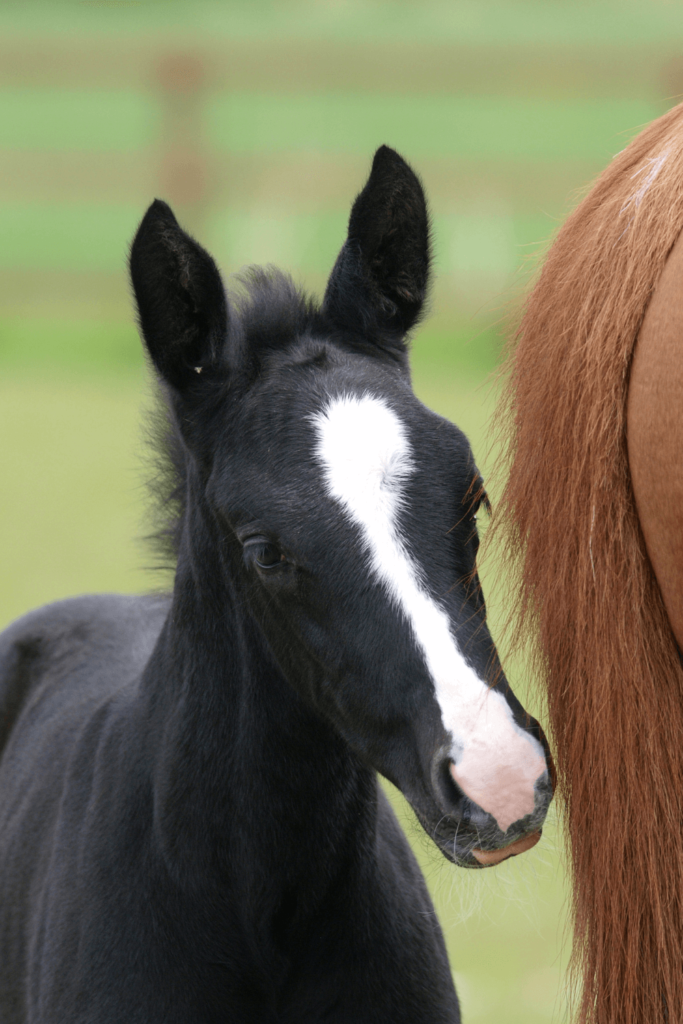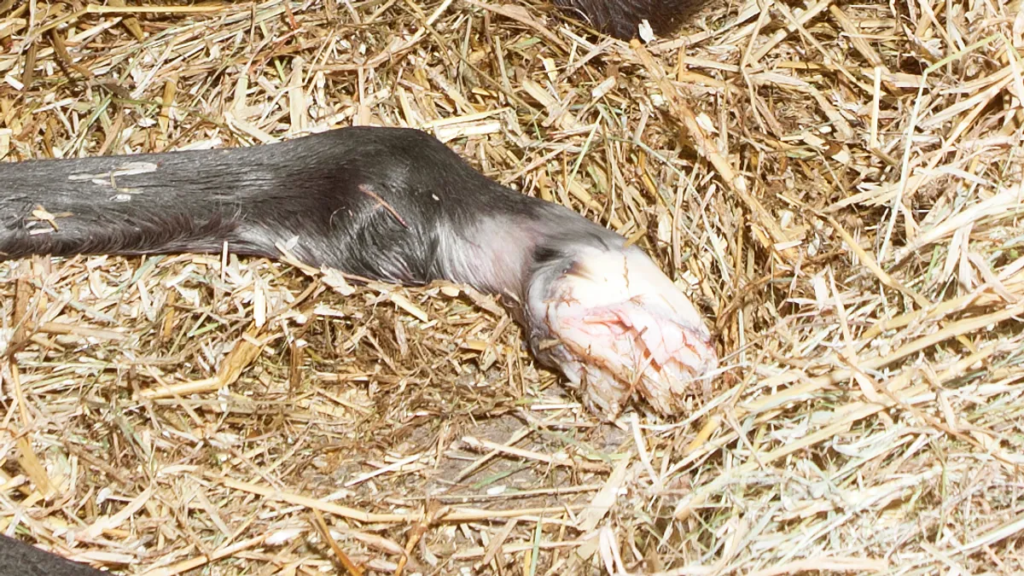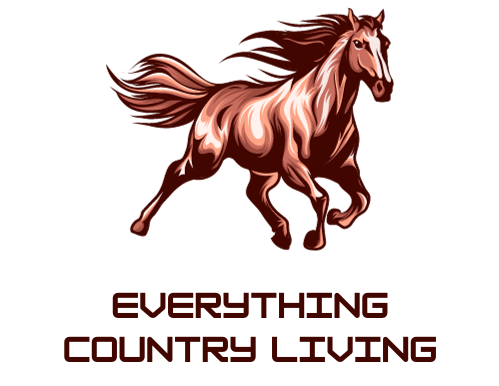
From the moment a foal takes its first wobbly steps, its hooves play an important role in its growth and development. As they grow and harden, the newborn horse hooves change from soft and pliable to tough and resilient. But what exactly happens during this remarkable transformation?

- Newborn horse hooves – Why do they look so strange?
- Understanding Hoof Development in Newborns
- Fairy Fingers and Golden Slippers
- How Long Does It Take for Newborn Horse Hooves to Harden?
- Common Hoof Problems
- How to Promote Healthy Hoof Growth in Newborns
- Feeding and Nutrition for Strong Hooves
- Hoof Care and Trimming
- Newborn horse hooves conclusion
Newborn horse hooves – Why do they look so strange?
Have you ever looked at a newborn horse hooves soon after they are born? If you have you may have wondered what exactly are you looking at.
The first time I saw newborn foal hooves I was quite shocked! What was wrong with his hooves, why do they look like shredded skin? Is this normal? After a few hours my foal was running around and the hooves began to look like an ordinary horse hoof, much to my relief.

After a bit of research, I found out this was all perfectly normal and mother nature’s way of protecting the mother and foal while it is developing.
Understanding Hoof Development in Newborns
Hoof development in newborn foals is a complex and fascinating process.
Fairy Fingers or Golden Slippers is a name given to describe the look of newborn horses hooves. A horse is born with eponychium, a kind of hoof capsule that protects the mother while she is carrying the foal and during the birthing process. Sharp hooves could cause tears and damage to the mare but the fairy fingers cover the hoof and make it soft and rubbery.
The eponychium is a soft, rubbery, and flexible hoof layer that is often described as fairy fingers because they look like long rubbery fingers protruding from the bottom of the hoof.
At birth, a foal’s hooves are soft and flexible, allowing them to adjust to the pressure of their body weight and movement.
In the first few weeks of life, the hooves grow fast, gradually hardening and taking on a more solid structure.
When the foal’s hooves are exposed to air, the soft capsule protecting the hoof begins to dry out and harden, eventually falling off naturally. The eponychium does not prevent newborn horses from walking. In fact, it wears off quickly just by the foal walking around!
Hooves are made up of a substance called keratin, which is similar to the material found in human hair and nails.
As the foal grows, the keratin forms a protective layer around the hoof, providing strength and durability. This process is vital for the foal’s ability to walk, run, and eventually carry a rider.

Fairy Fingers and Golden Slippers
Alternative terms for deciduous hoof capsules include “fairy fingers” and “golden slippers.” In the past, due to the unappealing appearance of these structures, equestrians coined more aesthetically pleasing names for them.
The term “fairy fingers” vividly describes the rubbery tissue resembling small fingers on the underside of the hoof. Similarly, “golden slippers” depicts the view of the hoof from the top, where it widens and slopes toward the toe, resembling a slipper. The use of “golden” emphasizes the yellowish hue of the tissue, adding a fashionable touch to the description.
How Long Does It Take for Newborn Horse Hooves to Harden?
Within moments after birth, as soon as the deciduous hoof capsule is exposed to the air, it will begin to dry out and harden. Once it has hardened and the foal is walking, the deciduous hoof capsule will fall off naturally. The hoof capsule typically wears off completely 48–72 hours after birth.
A foal’s hoof conformation will gradually change. It starts out with a tapered appearance, wider at the top and narrower at the bottom where it contacts the ground. The foal’s hoof will not only grow in length but also expand outward. As the foal bears weight on the hoof, the bottom of the hoof wall starts to spread out and the weight bearing surface becomes the wider part of the hoof.
Common Hoof Problems
While the majority of foals develop strong and healthy hooves, there are some hoof problems that can happen. One common issue is contracted heels, where the heels of the hooves become narrow and tight. This can lead to discomfort, lameness, and an increased risk of injury. Another common problem is hoof imbalances, which occur when the hooves grow unevenly or have an abnormal shape. These imbalances can affect the foal’s gait and overall soundness.
How to Promote Healthy Hoof Growth in Newborns
Regular exercise is crucial for foals to develop strong and steady hooves. Exercise promotes blood circulation to the hooves, which helps to stimulate growth and strengthen the hoof structures. Foals should have access to a safe and spacious environment where they can move freely and run and play.

Feeding and Nutrition for Strong Hooves
Feeding and nutrition play a vital role in the development of strong hooves in newborn foals. A balanced diet that includes high-quality forage, such as hay or pasture, is essential for providing the necessary nutrients for hoof growth. Foals should also have access to fresh water at all times to maintain hydration, which is crucial for overall hoof health.
In addition to forage, foals may require additional supplementation to ensure they receive all the nutrients they need. A veterinarian can provide guidance on the appropriate supplements for hoof development, taking into account factors such as the foal’s age, breed, and overall health.
Hoof Care and Trimming
Proper hoof care and regular trimming are essential for the healthy growth and maintenance of a foal’s hooves. Trimming should begin after first month and continue on a regular basis, following the growth rate of the hooves. A professional farrier should do the trimming to ensure it is done correctly.
During trimming, excess hoof material is removed to maintain the proper balance and shape of the hooves. This helps prevent imbalances and abnormalities that can lead to lameness or other hoof problems. Regular trimming also allows for early detection of any issues or abnormalities, allowing for prompt intervention and treatment if necessary.
Newborn horse hooves conclusion
Newborn horses start off with very strange looking hooves that are soft and rubbery often called fairy fingers. Soon after birth (an hour or two) foals stand and begin walking and the soft tissue wears off and their hooves begin to harden. Foals need exercise and regular trimmings to maintain the hoof health and to prevent imbalances.
I hope you found this post on Newborn horse hooves helpful. Have you ever seen a newborn foals hooves? Leave a comment, I would love to hear from you!
Have a great day and check out these other posts while you are here!
